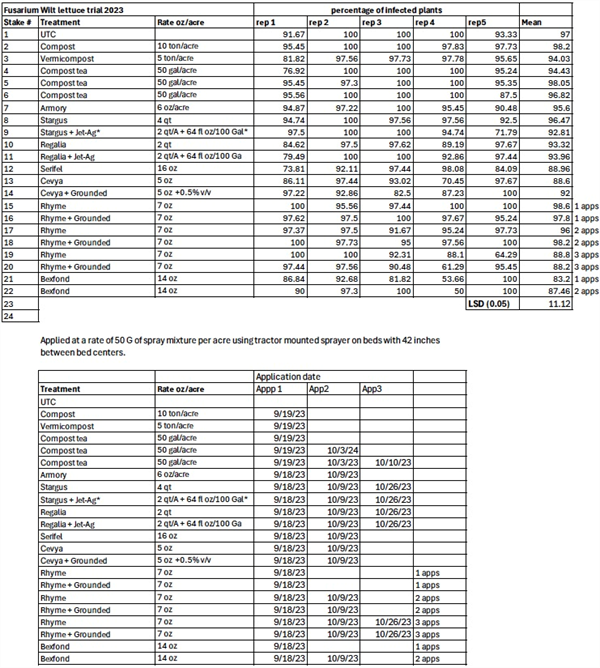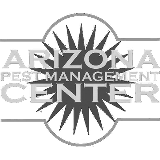Jul 6, 2016
The Effect of Weeds and Herbicides on the Uptake of Soil Applied Insecticides in Lettuce 2016
It makes sense to think that roots from weeds would intercept some of the insecticides applied in the soil to protect lettuce. It also makes sense to think that if lettuce roots were injured by root pruning herbicides that this too would reduce the uptake of systemic insecticides. We conducted a field trial last season to determine if either of these assumptions was true. The trial consisted of 15 treatments including various combinations of Admire Pro, Coragen,Kerb, Balan, Prefar and untreated checks. Soil and plant tissue samples were collected from the weeds and lettuce at various times during the season and analyzed in the lab with a liquid chromatograph. There was no correlation found between weed infestation, insecticides or herbicides in this trial. In fact, Coragen and Kerb were detected in soil and plant tissue where it had not even been applied. This is hard to explain and some of it may be because we were measuring an extremely small part of a very heterogeneous soil environment. Unlike the air above it, the soil is made up of variable amounts of sand, silt, clay, organic matter, water, gases and microorganisms. All of these interact to create constantly changing microenvironments. The five pesticides that we measured in this trial all react differently in this complex soil environment. They must be absorbed by roots and transported into the rest of the plant. If and when this occurs, they enter into another highly complex and variable environment. We have all seen spots in the field where dead plants are right next to healthy ones. We may have had a lot of precision and little accuracy. There are 43,560 square feet in an acre and a cubic foot of soil weighs about 100 pounds depending on soil type and moisture. An acre of lettuce at harvest weighs about 16 tons. Our plots were 4 beds wide and 30 feet long or 420 square feet. From this we analyzed 10 grams of soil or plant tissue for parts per million of the pesticide. There was a 4 ft. buffer around each plot although when analyzing for parts per million there is always the possibility of some off target moment in the air, water or soil. Stan Heathman, the first Extension Weed Specialist in Arizona, use to say that conducting more than one trial would only confuse you. It is obvious from these results, however, that our procedure needs to be reassessed and this trial conducted again.
To contact Marco Pena go to:
marcop@ag.arizona.edu
 To contact John Palumbo go to: jpalumbo@ag.Arizona.edu
To contact John Palumbo go to: jpalumbo@ag.Arizona.edu






